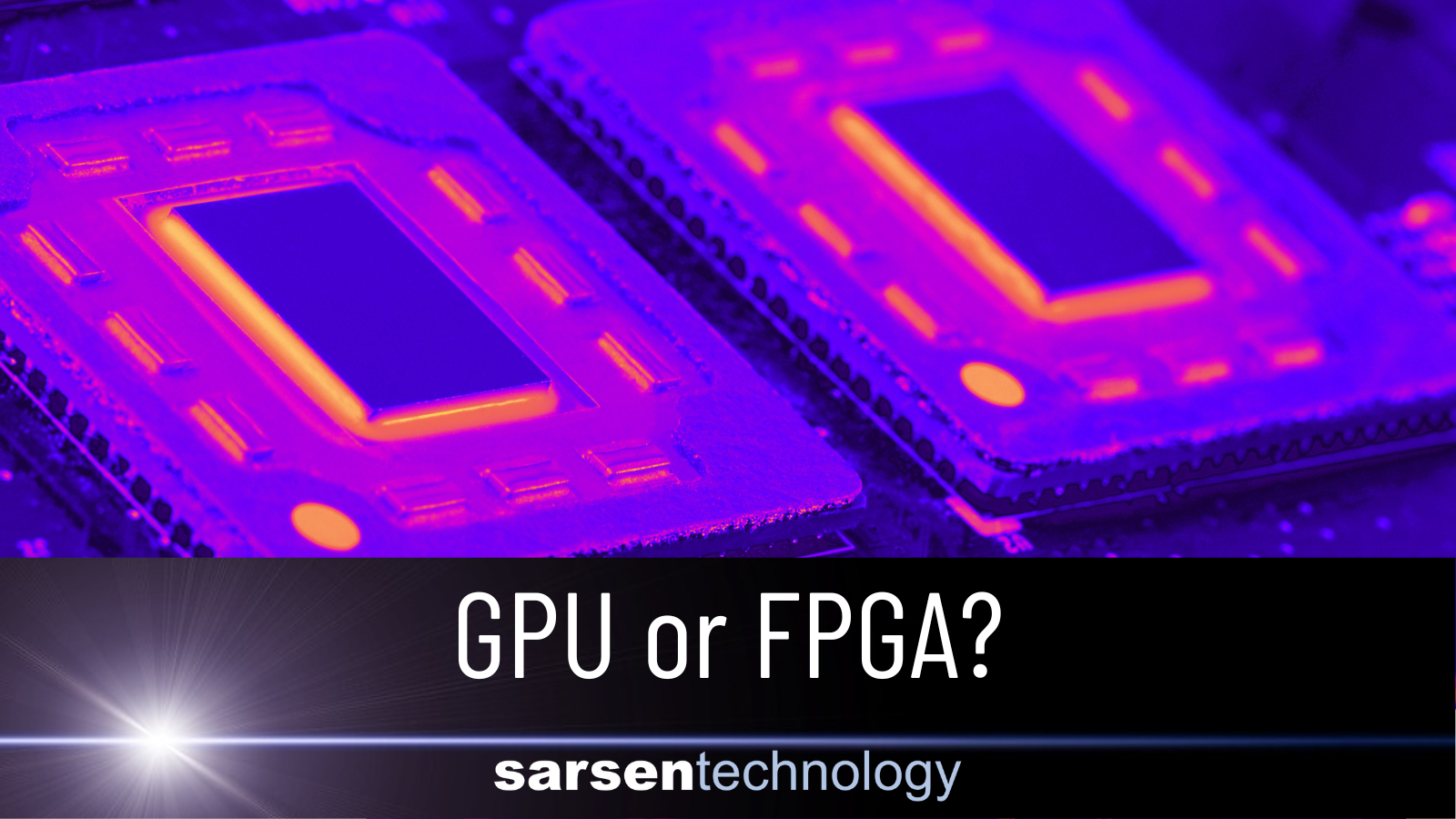Here at Sarsen we work with a number of cutting edge technologies, but the ones we get asked about most are
GPUs (Graphics Processing Units) and
FPGAs (Field Programmable Gate Array). They are both types of specialised computing hardware, but they have different architectures and are designed for different types of applications.
A GPU is designed to perform many simple calculations in parallel, which makes it ideal for graphics processing and other types of data-parallel tasks such as machine learning and scientific simulations. GPUs have a large number of processing cores, each of which is optimised for performing a specific type of operation. They can perform a huge number of calculations in parallel, which means they are very fast at completing certain types of tasks.
An FPGA, on the other hand, is a type of configurable hardware that can be programmed to perform specific tasks, but unlike a CPU or a GPU which have fixed architectures, FPGAs can be reconfigured to perform different types of computations. This makes them very flexible and adaptable, but also more complex to program and less efficient than a dedicated hardware design for a specific task.
FPGAs are used in a variety of applications, including digital signal processing, high-speed communications, and real-time control systems. They are often used in applications where low latency and high throughput are critical, and where the ability to customise the hardware for a very specific task is important. In contrast, GPUs are more commonly used in applications that require massive amounts of parallel processing, such as video rendering and scientific computing.
If you’re looking for a solution that is optimised for your specific application you’ll need to determine whether GPUs or FPGAs will be the best fit for what you need to achieve. Fortunately the friendly and knowledgeable team here at Sarsen can help you decide which is best suited, and can guide you through some of our market leading embedded COTS solutions to help you improve both time to market and technical capabilities for your project.
Give us a call - 01672 511166 or
send us an email with your requirements.



